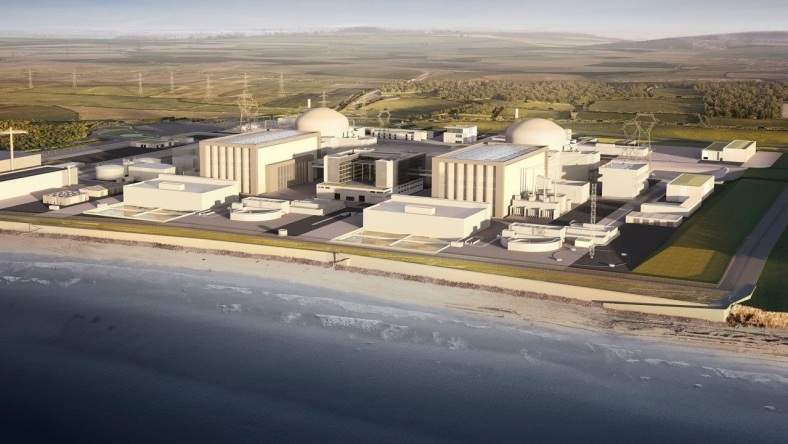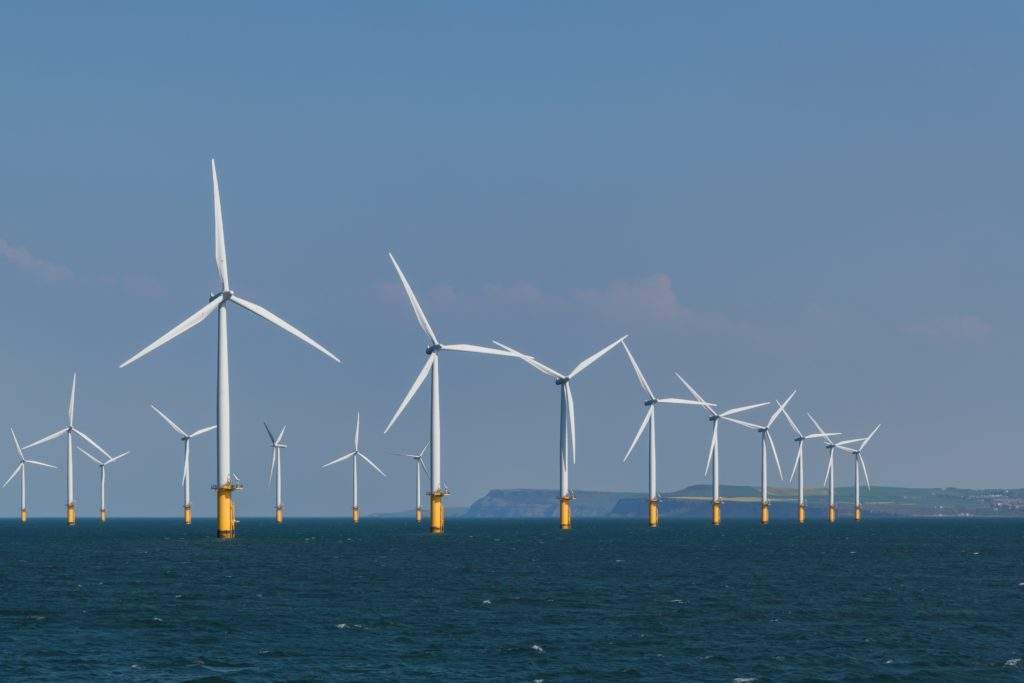
The UK nuclear new-build programme remains the flagship scheme of its type in Europe, with a new fleet planned to replace the elderly plants that currently supply up to a fifth of electricity generation.
But although the government’s broad commitment is secure, little remains of its original vision of a series-build approach that would cut costs and build a domestic industry. In practice, the UK has become something of a test bed for Asian reactor exporters, rather than a new rebirth for European nuclear, with Chinese and Japanese companies leading projects.

The UK nuclear new-build programme has been a casualty of both global nuclear industry failures and a changing domestic power industry, which has seen dramatic falls in the cost of offshore wind and a boom in interconnection. Nuclear still has strong political backing – in fact, it seems that the government will have to take some kind of stake in future projects. That is partly because the projects are seen as so risky by investors, and partly because successive reports by parliamentarians and UK financial watchdogs, like the National Audit Office, have pointed out that the government’s insistence that it had transferred that risk to the private sector had been a major factor in raising costs, because the government could secure cheaper finance for the project than the private sector.
Far from giving the go-ahead for a series, the influential National Infrastructure Commission said this year in its National Infrastructure Assessment that “Government should not agree support for more than one nuclear power station beyond Hinkley Point C before 2025.”
In fact, two reactor designs have been cleared to follow EDF’s EPR and at least one company sees the design as ready for series build.
The Commission is advisory and the government can ignore its advice. In the past, it might have meant some discussion in the Department for Business, Energy and Industrial Strategy (BEIS) over whether to favour the Moorside site adjacent to Sellafield in northwest England, or Wylfa Newydd in Wales. But the implosion of Westinghouse, whose AP1000 was lined up for Moorside, means that troubled project has been overtaken by another: Wylfa in Wales.
EDF and the Chinese transfer
Construction work is now underway at EDF Energy’s EPR at Hinkley Point C, with nearly 2000 workers on site in Somerset. Delays and cost increases at two earlier EPR reactors, Olkiluoto 3 in Finland and Flamanville 3 in France, have raised continuing concerns over the project but EDF was able to report at the end of June that at least one EPR plant, Taishan in China, has begun operating and was connected to the grid.
Hinkley was expected to be the first of a fleet. Now that construction is underway EDF has turned its attention to a follow-up plant, Sizewell C. China General Nuclear Power Corp, (CGN) is investing £6 billion in Hinkley Point, and at Sizewell C it will be a co-developer with EDF. But that twin-unit project, if it goes ahead, will be the last EPR in the UK. The partners have begun the Generic Design Assessment process for a Chinese-designed plant, the HPR-1000 for future use in the UK. That design is earmarked for Bradwell in Essex.
UK nuclear new-build programme: Westinghouse miss-steps
Progress at Moorside has been the most troubled. The site was seen as more testing than others in the new-build plan because although it abuts the UK’s biggest nuclear site, Sellafield, it had far too small a grid connection for the large plant planned, necessitating new transmission lines that avoided the Lake District – one of the UK’s largest and best-loved National Parks and the other major source of income in the region. But it was Westinghouse’s only option when its AP1000 design was effectively excluded from other potential sites.

Westinghouse’s owner Toshiba now owns the whole of NuGeneration, the company due to own and operate Moorside. Two of the early investors, SSE and Iberdrola, pulled out of the project and Engie exercised an option to sell its stake to Westinghouse owner Toshiba in 2017, after Westinghouse’s US subsidiary entered bankruptcy protection. Westinghouse’s fuel and maintenance services have been sold to Brookfield Partners (the transaction was completed on 1 August).
There was good news for Westinghouse when its first AP1000 plant, in China, started up this year, but the UK project is on hold while Toshiba seeks new investors. Plans for Korea Electric Power Company to take over the project, expected to complete earlier this year, floundered and may have receded still further after a change of government in Korea and a new chief executive has taken over at Kepco. The project remains in abeyance and NuGen has been restructuring to reduce company-running costs.
Horizon comes closer
Wylfa has as much local support as can be expected for nuclear in the UK. It replaces a plant that shut down just a few years ago, which hollowed out high-value jobs in an area short of other options. Other pieces of the puzzle are also falling into place. Wylfa’s design, based on Hitachi’s advanced BWR, won generic approval from the Office for Nuclear Regulation (ONR) in 2017 and ONR is expected to make a decision on a site-specific licence later this year. Horizon, the company that will own and operate the plant, applied for a Development Consent Order in June and if granted that sets it on track to start generating, as planned, in the ‘mid 2020s’.
The remaining question at Wylfa Newydd is whether it can be funded. The UK government has reportedly agreed to a £5 billion financing package, although it stressed that a deal was not done and it is not clear what form that support takes. Horizon also said it was looking for support from the Japanese government. The fundamental question remaining is the price to be paid for power from the plant. The project has no hope of attaining a level near the £92.50/MWh agreed in October 2013 (and index-linked) for EDF’s Hinkley Point C, and reports in the Guardian suggest a price of £80/MWh, while the Financial Times suggests it could be lower still. Horizon appointed Bechtel as project management contractor for Wylfa Newydd on 22 August and also signed support contacts with Hitachi Nuclear Energy Europe for delivery of the ABWR reactors and JGC New Energy UK Limited for balance of plant services.
If Wylfa Newydd goes ahead successfully, it is still possible that the UK could have two short series builds, as Horizon also owns the Oldbury site in Gloucestershire where an earlier plant closed down two decades ago.
It remains to be seen whether the future for new nuclear is one plant at a time, as recommended by the National Infrastructure Commission, or a ‘two by two’ series led by EDF and Horizon. The answer is more likely to lie in the comparison between nuclear and other fast-developing forms of low-carbon technology than in the value given to nuclear by its proponents.
Non-nuclear risks: Brexit
When the UK exits the European Union in March 2019 its membership of Euratom will lapse. The UK government has promised that it will put in place new agreements and indeed has made it a priority area of work. So does the UK nuclear new-build sector have to worry about the effects of Brexit?
The answer seems to be yes. There are three main issues.
The first is the general seizing up of the legislation and government administration, as time is taken up with managing Brexit and the associated paperwork. That slows down both policy development and perhaps decision-making on issues like contracts for difference. The second is trade. The likelihood of a ‘hard’ Brexit is growing and that could see the UK depart not only trade agreements that apply within the bloc, but also agreements that the UK is party to in virtue of its EU membership. It is far from clear what the effect will be but most estimates foresee some disruption in traded goods, if not major delays. Finally, there are concerns over the skills and expertise needed to run these complex projects. Major contractors may not be able to pull experts or skilled trades in from across the bloc at short notice.
Until Brexit is complete, that remains an unquantifiable risk for any nuclear new-build company in the UK.

Non nuclear risks: beyond the balance of plant
While the companies involved in the UK nuclear new-build programme seek to reduce uncertainty within the plant boundary and attract investors to their projects, outside the plant boundary the UK’s electricity network regulator has added a new twist to the new-build saga.
The regulator, Ofgem, wants companies to compete to build the grid extensions needed for new power plant, including offshore wind and nuclear. It promised to put ‘high-value, separable’ extensions worth over £100 million up for grabs, hoping the procedure would bring forward more innovative – and cheaper – options than those procured by the venerable National Grid. The nuclear units at Moorside and Hinkley Point C were first on the list.
In the event, the regulator’s timing has been unfortunate. Preliminary work on a connection to Moorside, which will require a subsea tunnel, has been halted while the future of the plant remains unclear, while enabling legislation required for the new competition regime has been a casualty of Brexit, because work on the plan to exit the European Union has caused a legislator logjam.
Nevertheless, Ofgem has pressed ahead with plans to cut the cost of connection at Hinkley Point – stung possibly by recent public complaints about growing network charges. It has decided that National Grid must deliver the connection under a ‘competition proxy’ model that takes advantage of current low financing costs. National Grid disagrees with Ofgem’s assessment of the project risk, not least because it will be delivered using a new transmission tower design, and has threatened legal action.
In practice, the dispute is unlikely to delay startup at Hinkley Point C: although UK grid expansions tend to be slow, nuclear plant construction is slower. The UK has a good track record in compensating generators when they cannot export power. However, for some investors it will raise a red flag; the UK government’s stated commitment to new nuclear does not mean it will allow it a smooth ride through other industry changes.
Janet Wood is a journalist and editor of New Power.
This article originally appeared in Nuclear Engineering International.






